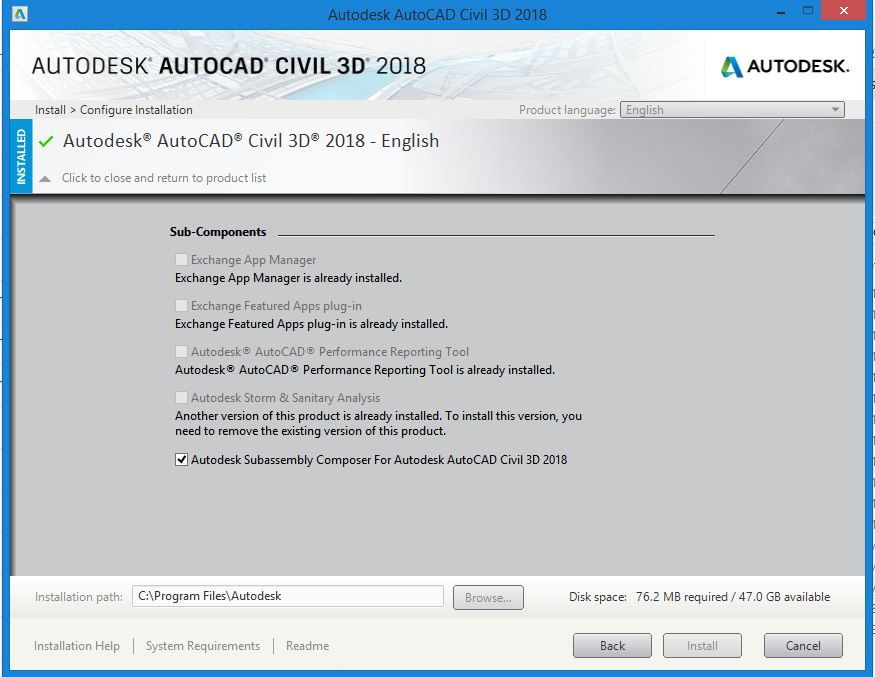Subassembly Composer For Autocad Civil 3d 2012 Download
December 14th, 2015 Customizing with Subassembly Composer Whether you have been using AutoCAD® for one year or 15, you can attest to its power as a drafting and design platform for many industries. AutoCAD has some verticals with specialized tools to design and draft elements pertaining to different industries. One of those verticals is AutoCAD® Civil 3D, which has specialized tools to create road corridors, ditches, river beds, and more. Those tools are great the way they are, but we can make them even better through customization and by using Autodesk Subassembly Composer. In this article we will see how to use the Subassembly Composer; we will look at its components and create two subassemblies to see how it works.
Customize It and Make It Yours When we customize a program or a graphical user interface it usually is because we want to modify the way things look and behave. In AutoCAD we have been doing this for years by using workspaces containing specific combinations of tools, user profiles with specific configurations for system variables, and templates with pre-existing objects and styles. When we customize a program we enhance our productivity because we adapt it to our specific needs.

With this in mind let’s take a look at Subassembly Composer. Subassembly Composer and its Applications Subassemblies are the building blocks for assemblies in Civil 3D, and we can look at assemblies as cross sections for roads, rivers, embankments, etc. Out of the box, Civil 3D has many great subassemblies for multiple applications; however, in some cases those subassemblies are limited because they either don’t work the way we would like them to or don’t do the things we would like them to.
Autodesk Subassembly Composer Technology Preview for AutoCAD Civil 3D 2011 provides a powerful yet easy-to-use interface to visually modify or create complex subassemblies without the.

Subassembly Composer is a program where you can create subassemblies from scratch and then use them in Civil 3D just like you would with any other subassembly. Subassembly Composer has five sections: Toolbox, Flowchart, Properties, Preview, and Packet Settings. Toolbox is where you find all the elements that make up the subassembly such as its geometry, operators that determine geometry, tools to organize these elements, etc. Flowchart is where you lay out the workflow: what comes first, what comes after, what decisions are made, calculations performed, and so on. Properties is where you set the properties for each of the elements you bring in from the toolbox; properties include geometry, calculations, and overall behavior. Preview is where you see how the subassembly looks as you are putting things together.
Packet Settings is where you create and set up the subassembly parameters, targets, and so on. To understand what Subassembly Composer does, we need to review how subassemblies work, what their components are, and what they do; specifically, we need to understand codes, points, links, and shapes. The codes used when creating a subassembly will work with the codes in the Code Set Styles, point codes will create feature lines, and links can be used for surface creation Figure 1: Subassembly parts Figure 1 shows the basic anatomy of a subassembly with codes, points, links, and shape. The information found in the help menu for each subassembly gives you more information about each subassembly, shows you its anatomy, the components for which you can override dimensions by using targets, etc. All of this information can help you to reverse engineer these subassemblies, have a better grasp of how they work, and create parametric subassemblies in Subassembly Composer.
Sbornik zadachi po visshej matematike dlya ekonomistov reshebnik ermakov. As an AutoCAD user, you are accustomed to drawing lines in a very visual way. This makes the way Subassembly Composer works seem a little weird, so when you design a subassembly it is always a good idea to start by drafting an outline by hand.
Subassembly Composer also requires communicating with the program using its own language, almost like coding; in this case it uses.NET framework. All of this will make more sense once we start working with Subassembly Composer in the following exercises. Slanted Curb Subassembly Let’s say that you are working on a project that calls for slanted curbs. You open the Tool Palettes and realize that there is nothing there that looks like what you want, so you can’t use any of the existing subassemblies.
You can solve this in Civil 3D if you create a closed polyline, turn it into a subassembly, then assign codes, links, and shape and it probably would be fine. The problem is that if you want to use different dimensions, you would have to create a new one. Instead of doing that, let’s create a parametric subassembly in Subassembly Composer. The steps below outline the process to create a simple slanted subassembly. • Open Subassembly Composer.